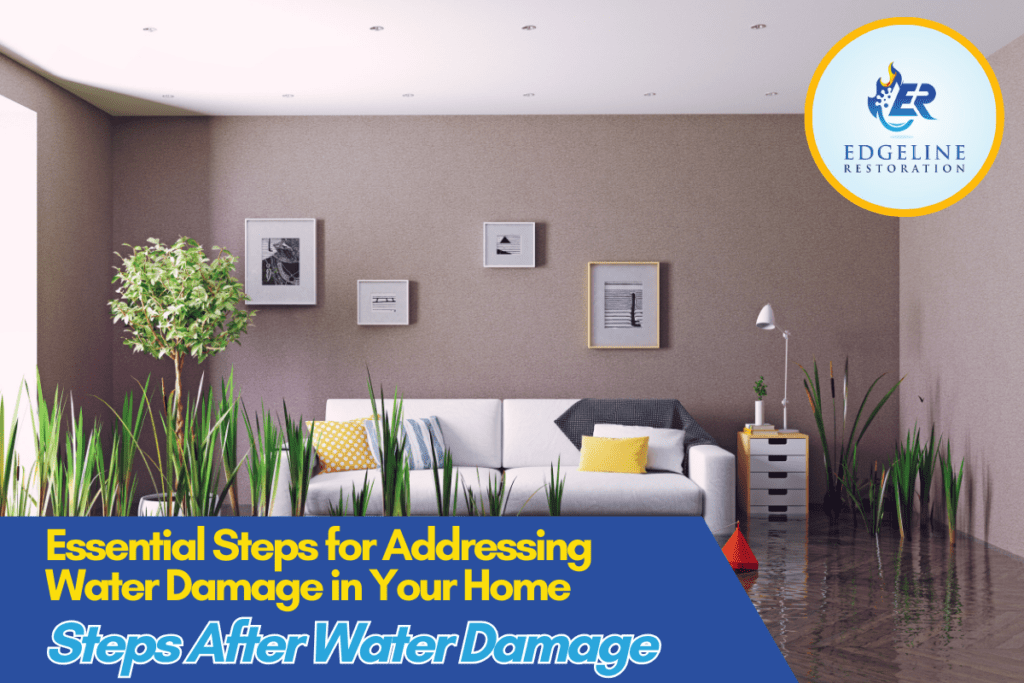
Water damage is one of the most common and potentially devastating issues that homeowners can face. Whether it’s a flood, a burst pipe, or a leaky roof, water damage can lead to serious structural issues and mold growth if not addressed promptly and properly. In this comprehensive guide, we will walk you through the essential steps to take immediately after discovering water damage, the role of water damage restoration services, and tips for preventing future damage.
Immediate Steps After Discovering Water Damage
Find and Shut Off the Source of Water
The first and most critical step after discovering water damage is to find the source of the water and shut it off if possible. For instance, if a pipe is leaking or a supply line is broken, turning off the main water supply is essential. Familiarize yourself with the location of your home’s main shut-off valve to save valuable time in emergencies.
Contact a Mitigation Contractor
After stopping the water source, the next step is to contact a mitigation contractor. These professionals can help remove the water before it gets absorbed into materials, exacerbating the damage. Acting quickly can mitigate future damages and lower restoration costs.
Notify Your Insurance Company
If you plan to file an insurance claim, notify your insurance company promptly. They need to inspect the damage to determine coverage. Failing to give them access can complicate your claim process. Additionally, it’s crucial to save any broken parts, such as burst pipes or damaged fixtures, for the insurance adjuster to inspect later.
When to Call a Water Damage Restoration Service
Assessing the Damage
Understanding the Risks of Ignoring Water Damage
While you might think you can assess the damage on your own, it’s vital to hire a professional mitigation contractor. Water can seep into unseen places like under floors and behind walls. Professionals use tools like moisture meters and thermal cameras to detect hidden moisture, preventing further complications like mold growth.
Ignoring water damage can lead to serious risks, including mold growth, dry rot, and structural issues. Homes are perfect environments for mold when they contain moisture, warmth, and organic materials. Proper and timely remediation is crucial to prevent extensive damage and costly repairs.
Damage Assessment and Restoration Process
Initial Inspection and Water Extraction
Upon hiring a restoration service, you can expect them to conduct a thorough inspection to determine the extent and category of the water damage. The immediate focus is on extracting the water and performing necessary demolition of unsalvageable materials.
Containment and Hazard Assessment
Professionals will build containments to prevent the spread of contaminants and conduct hazard assessments, including testing for lead, asbestos, and mold. This ensures a safe and compliant removal process for all affected materials.
Drying and Decontamination
Processes such as negative air pressure can help in drying out the affected areas efficiently. Air scrubbers equipped with HEPA filters will capture particulate matter, improving air quality and preventing the spread of mold spores.
Insurance and Restoration Costs
Understanding Coverage
Generally, if a loss is covered by insurance, the steps necessary to return the property to its pre-loss condition will also be covered. However, any unrelated renovations or upgrades will not be part of the coverage.
Stages of Restoration
The restoration process involves several stages including water extraction, hazard assessment, containment, and decontamination. Proper documentation is critical, as it supports your insurance claim and ensures transparent communication between all parties involved.
Preventative Measures for Future Protection
Routine Maintenance and Upgrades
Ensuring your home is properly maintained can prevent many water damage issues. Regularly inspect and replace aging appliances like water heaters, and consider installing automatic shut-off valves for added protection.
Proper Heating and Insulation
During colder months, it’s crucial to keep your home properly heated to avoid pipe bursts. Insulating pipes in vulnerable areas like crawl spaces can further reduce the risk of freezing and subsequent water damage.
Credentials to Look For in Restoration Services
Certifications and Experience
When hiring a water damage restoration service, look for certifications from reputable organizations like the IICRC (Institute of Inspection Cleaning and Restoration Certification). Specific credentials for water damage technicians include the WRT (Water Remediation Technician) and AMRT (Applied Microbial Remediation Technician) certifications.
Conclusion
Addressing water damage promptly and efficiently is crucial for minimizing damage and costs. By following these essential steps, contacting professionals, and understanding your insurance coverage, you can ensure your home is restored to its original condition. Preventative measures and routine maintenance will help protect your home from future water damage.





